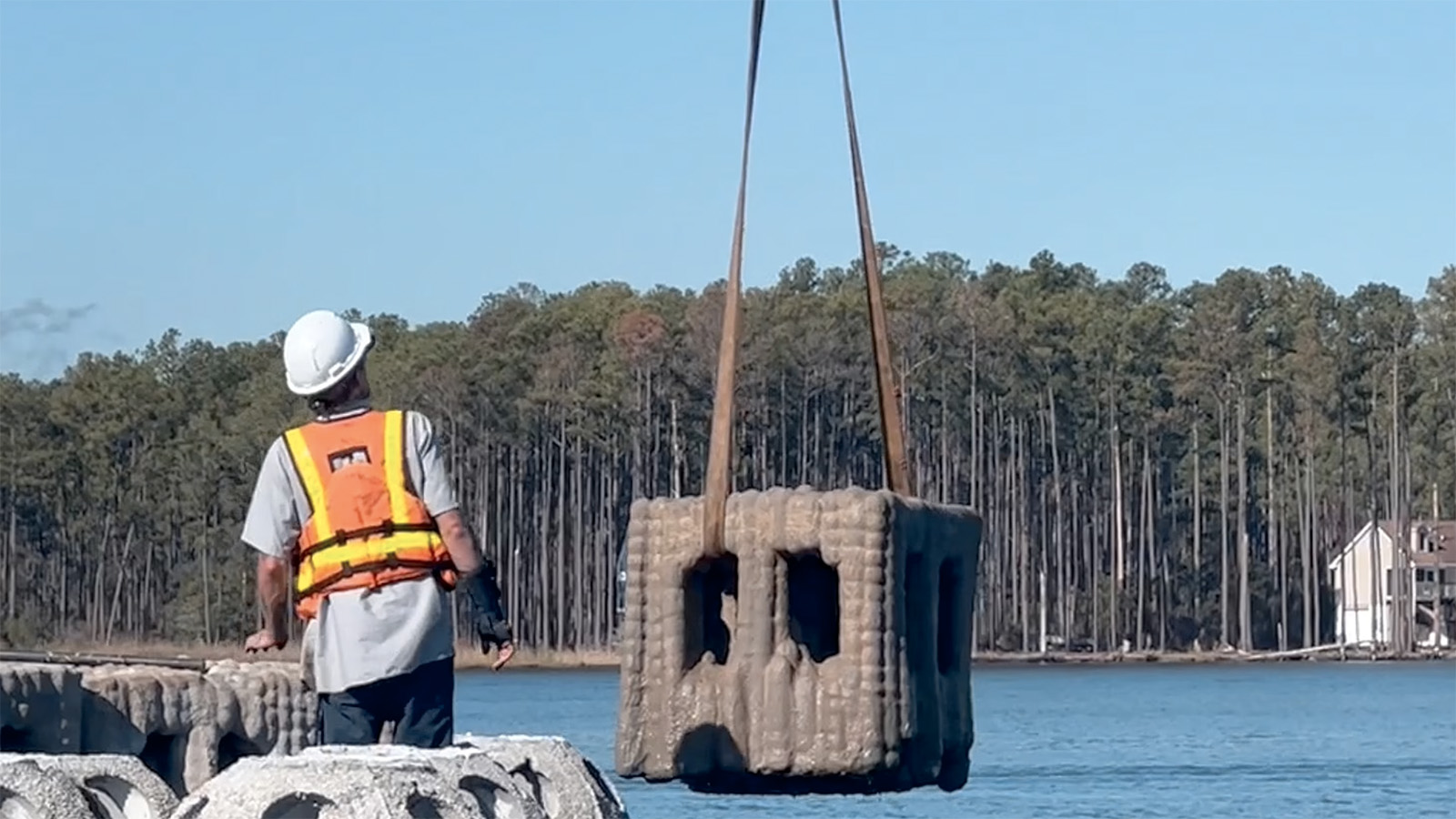The work we're doing on the Pamlico River with the North Carolina Division of Marine Fisheries was covered today by ABC News. They spent some time with our COO, Tad Schwendler, to understand the project, how our approach works, and what the project aims to achieve. The video they produced as well as the original article are available below.
We're thrilled that our advanced technology approach to delivering nature-based resilience and restoration is getting this kind of national attention. More attention will lead to more consideration of how to address these challenges. And more consideration, from us and from other innovative approaches, will be how we'll be able to make real impact.
(See the original story here at ABC News)
---
Installation underway of 15 acres of 3D-printed artificial reefs in coastal North Carolina
Several acres of 3D-printed artificial reefs are currently being planted in coastal North Carolina to bolster the region's biodiversity and promote new growth of natural reef.
The reefs, 3-foot concrete cubes called "Exoforms" that contain a lot of void space to allow marine life to thrive, are being planted in the Palmico River, a large estuary system on North Carolina's Atlantic Coast, Tad Schwendler, COO of environmental solutions firm Natrx, told ABC News.
The roughness and irregularities of the structures leaves room for species at the bottom of the food chain, such as algae and other microorganisms, to grow, which then attract the larger species, Schwendler said.
The 15-acre installation is part of a two-year project by the Coastal Conservation Association of North Carolina and the North Carolina Division of Marine Fisheries,in Pamlico Sound and its tributaries. The deployment began on Oct. 20 and is expected to be complete by the end of the week.

The reef site will be one of 25 artificial reefs managed by the DMF. In May 2022, a similar artificial reef was deployed upstream, near the mouth of Bath Creek, Schwendler said.
The reefs will promote cleaner water and provide habitat for a variety of marine life, including fish, oysters, mussels, crustaceans and other invertebrates, Schwendler said. Important game fish, such as red drum, bass and speckled trout, are also expected to flock to the location once the reefs are settled and thriving.
Recreational fishing tends to cluster in certain locations in North Carolina, and promoting biodiversity in other parts of the state will allow that activity to spread out, Schwendler said.
"It's better for the ecosystem," he said.
The artificial reefs will also serve as skeletons for natural reefs to grow, Schwendler said. For the natural reefs to recur naturally, they need a substrate to grow upon, Schwendler said.
In recent years, coastal North Carolina has been experiencing environmental issues such as coastal erosion from sea level rise and more development along the coast.
"By creating these artificial reefs, it helps improve the resilience of our coastline, especially since a lot of the natural reefs in the U.S. have been lost over the years," Schwendler said.
The project is a prime example of using technology and natural systems to protect shorelines and make them more resilient, Schwendler said.
Natural systems are the most cost effective and environmentally friendly way to promote biodiversity, Schwendler said.
"These estuarine reef installations represent significant milestones in the use of adaptive infrastructure technology in North Carolina," Leonard Nelson, CEO of Natrx, said in a statement.
In addition to promoting biodiversity, artificial reefs have been found to capture carbon, according to a study published earlier this month by the Friends of the RGV Reef, a Texas-based conservation organization, and the University of Texas at Rio Grande Valley.
The two-year study found that sponges and soft corals that cover the RGV Reef, the largest and most complex artificial reef off the Texas coast, do contain high amounts of carbon dioxide "in some significant proportion," the researchers found. Both the reef’s structure, the bottom or sediment, as well as the biomass, fish and other marine life in the water column, is capturing or trapping carbon, the scientists said.


